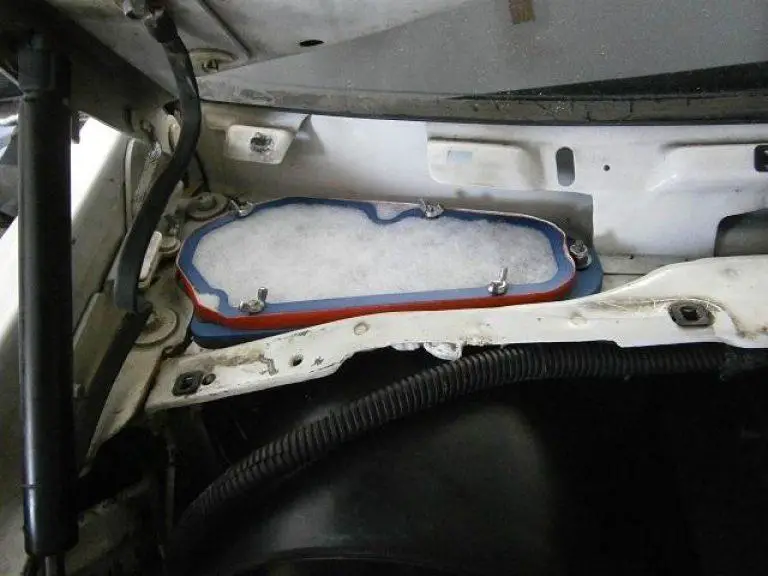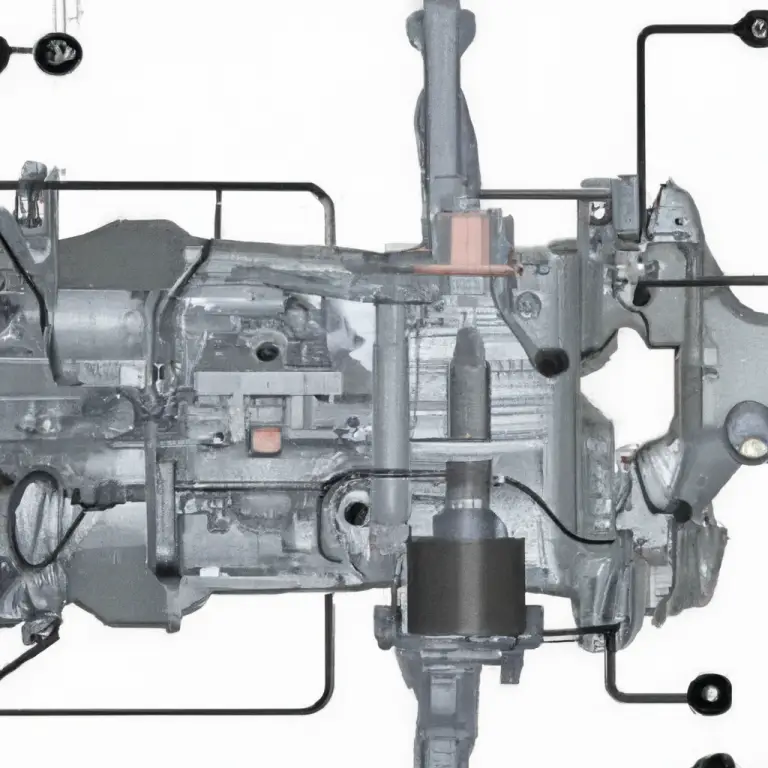2005 Ford F150 Oxygen Sensor Location
Last Updated on by David Jon
In this comprehensive guide, insights into the precise location and replacement method of the Oxygen Sensor in a 2005 Ford F150 will be provided, crafted to aid Ford owners, DIY fans, and even professional mechanics. Recognizing the pivotal role of this specific component in maintaining optimal vehicle performance, the objective is to achieve a blend of technical instruction and user-friendly accessibility. Henceforth, it’s ensured that those invested in Ford maintenance will find this content particularly beneficial.

Understanding the Function of Oxygen Sensors in 2005 Ford F150
In the realm of vehicle components, oxygen sensors hold a critical function as they determine the air-to-fuel ratio in internal combustion engines.
How oxygen sensors work in a vehicle
In essence, oxygen sensors measure the amount of unburnt oxygen left in the exhaust as it exits the combustion chamber. The sensor then transmits this information to the engine control unit (ECU) of the vehicle. In response, the ECU adjusts the amount of fuel entering the engine to maintain the ideal air-fuel mixture, ensuring optimal engine performance and fuel efficiency.
Role of an oxygen sensor in Ford F150
In the Ford F150, specifically the 2005 model, the function of the oxygen sensor isn’t different. As with other vehicles, the sensor helps maintain the appropriate balance of air and fuel mixtures inside the engine. This not only works towards maximising efficiency but also minimises harmful emissions, making the vehicle more environmentally friendly.
How many oxygen sensors are there in a 2005 Ford F150 and their roles
The 2005 Ford F150 typically houses four oxygen sensors. Two sensors – upstream ones – are located before the catalytic converter and two are after – the downstream sensors. The upstream sensors primarily monitor the level of oxygen in the exhaust gases from the engine, playing a significant role in adjusting the air-fuel mixture. The downstream oxygen sensors have a monitoring function, ensuring that the catalytic converter is operating at optimal efficiency.
Signs of a Failing Oxygen Sensor in 2005 Ford F150
Detecting a faulty oxygen sensor is crucial to maintain vehicle performance.
Physical symptoms of a faulty O2 sensor
A valuable indication of a compromised O2 sensor in the 2005 Ford F150 may be the Check Engine light on your dashboard. Although this light can be indicative of various issues, a professional mechanic can diagnose if the cause is a failing oxygen sensor.
Performance issues indicating O2 sensor problems
If your Ford F150 starts to exhibit decreased performance like rough idling, stalling, or difficulties in starting the vehicle, a failing O2 sensor could be a possible reason. The lack of correct data from the O2 sensor could cause the ECU to wrongly calculate the air-fuel mixture, leading to these issues.
Impact on fuel efficiency due to problematic O2 sensor
A drastic decrease in fuel efficiency can also indicate a failing oxygen sensor. With incorrect oxygen level data, the ECU may respond by burning excess fuel, negatively impacting your fuel economy.
Detailed Location of Oxygen Sensors in 2005 Ford F150
It is always beneficial to be aware of the precise location of the oxygen sensors in your vehicle.
Front O2 sensor location
The upstream or front O2 sensors in the 2005 Ford F150 are located on the exhaust pipes coming directly out from the engine. These are easily accessible from the engine bay.
Rear O2 sensor location
The downstream or rear sensors are situated behind the catalytic converter. The exact location, however, varies based on whether your vehicle is a rear-wheel or a four-wheel-drive model.
Visual representation of sensor location
A visual representation can aid in locating the position of these sensors. Consult your vehicle’s service manual for a detailed diagram to assist in identification.

Tools Required to Access the Oxygen Sensor on a 2005 Ford F150
Having the right tools can make the process of accessing and replacing the oxygen sensors significantly easier.
List of basic tools and their purpose
Basic tools that you would require include a ratchet set with an extension, an oxygen sensor socket, and possibly a breaker bar for loose sensors.
Advanced tools for easier access and removal
Some advanced diagnostic tools, such as a professional-grade OBD2 scanner, can read specific error codes associated with the oxygen sensor, making diagnosis more accurate.
Safety accessories needed during the job
We advise the use of appropriate safety accessories, including gloves and safety glasses, to protect against potential injuries while handling heated components or sharp tools.
Step-by-Step Guide to Locating the O2 Sensor in 2005 Ford F150
The process of tracking the oxygen sensor involves several steps.
Precautionary measures before starting
Ensure the vehicle is parked on a flat surface, and the engine is cool to avoid any accidental burns.
Locating the front oxygen sensor
Begin in the engine bay from the exhaust manifold, following the exhaust pipe to locate the upstream sensor.
Locating the rear oxygen sensor
To locate the downstream sensor, trace the exhaust pipe past the catalytic converter.
Tips for visual confirmation of the sensor
The oxygen sensor looks like a small plug attached to the exhaust pipe with electrical wiring coming out from its end.
Experience Tips on How to Easily Access the O2 Sensor
Proper understanding of vehicle components and their locations could ease the process of accessing O2 sensors.
Using the correct approach
Approaching the sensor from underneath the vehicle usually offers the best access, even for the upstream sensors.
Wooden ramp or mechanical lift: which is better?
If available, a mechanical lift provides the easiest and safest way to elevate your vehicle. However, a pair of sturdy wooden ramps can also do the job quite effectively.
Advice on easy detection of O2 sensors
Remember, the sensors are installed in the exhaust system. Identifying the exhaust system components could be a quick way to locate the sensors.
Instructions on How to Replace the Oxygen Sensor
Replacing the oxygen sensor of your Ford F150 demands a detailed step-by-step process to ensure a successful job.
Step-by-step guide on Replacement process of O2 sensor
Remember always to disconnect the vehicle battery before beginning. Unscrew the old sensor with help of the O2 sensor socket, detach the electrical connections and replace it with the new sensor.
Safety precautions during replacement
Wear heat-resistant gloves and safety glasses. Also, remember that oxygen sensors can be tight, so use controlled force to avoid damaging the exhaust pipe.
Reconfirming correct installation of the new oxygen sensor
After installing the new sensor, reconnect the battery and start the engine to check if the Check Engine light remains off, indicating successful installation.
Understanding the Coding of the Oxygen Sensors
Knowing how to decode the part numbers can make replacement of the oxygen sensors more straightforward.
Decoding the part number on the sensor
The part number is usually embossed on the sensor exterior and can be referenced in the vehicle’s service manual or through online portals dedicated to Ford F150 maintenance.
What do different O2 sensor codes mean?
The codes typically highlight the features of the oxygen sensor, such as the type of sensor, heater circuit type, and the compatible type of fuel.
Identifying the correct replacement sensor
Matching the part number and code from the old sensor will help in identifying the correct replacement sensor, ensuring compatibility with your vehicle.
Maintenance Tips for Oxygen Sensors in 2005 Ford F150
Performing regular checks and maintenance can help prolong the life span of your O2 sensors.
Regular inspection intervals for O2 sensors
The oxygen sensors should ideally be inspected with every routine service, usually at intervals of 10,000 to 15,000 miles.
Cleaning of O2 sensors: when and how?
Periodic cleaning of the sensors is recommended, though caution should be adhered to avoid damage. Specialized cleaning solutions are available that effectively remove carbon deposits.
Precaitive measures to prolong O2 sensor life
Avoid low-quality fuels that could form deposits on the O2 sensors and ensure that your vehicle is properly tuned to keep the sensors in good working condition.
Where Can I Find the O2 Sensors in a 2005 Ford F150?
The 2005 Ford F150 has multiple O2 sensors placed strategically throughout the vehicle. The ford f150 o2 sensor quantity for this model can vary depending on the engine size and configuration. To locate these sensors, you can refer to your vehicle’s manual or consult an automotive professional for accurate guidance.
Troubleshooting Common Issues With 2005 Ford F150 Oxygen Sensors
Understanding how to troubleshoot could save time and resources.
How to troubleshoot a failing O2 sensor?
A professional-grade OBD2 scanner can be a significant asset in troubleshooting a problematic O2 sensor. It can provide specific error codes related to the O2 sensor and the status of various parameters.
Common error codes related to O2 Sensor
Common error codes relating to an O2 sensor in a Ford F150 are P0131, P0132, P0133, and P0137. These codes refer to various forms of sensor malfunctions like low voltage, high voltage, or slow response.
Understanding the readings of an O2 sensor
By referring to the vehicle service manual and the specific O2 sensor codes, you can understand the standard working parameters for the oxygen sensor, helping in diagnosing any anomalies.




